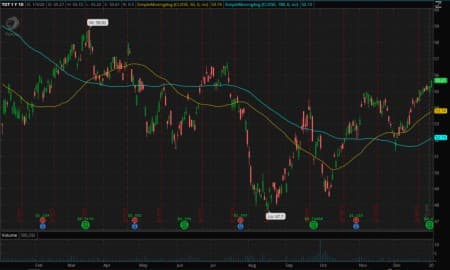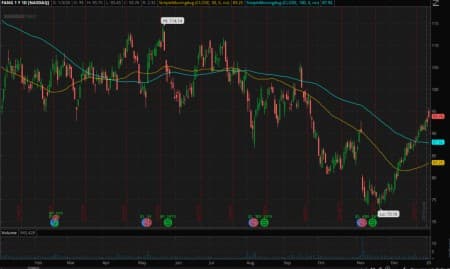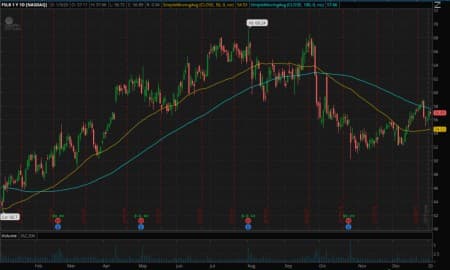A couple of weeks ago, I offered reasons why I believed that after a decade of underperformance, 2020 could be the year that energy finally starts to play catch up with the broader market. They centered around an improved outlook for trade, or rather the evidence that suggests that even if the trade war drags on, the damage would be limited, and that reduced capex from oil companies and basic market forces would cause oil to rise, or at the very least not fall far. If you agree with those basic premises, the next question is what to buy to take advantage of that.
The first and most obvious play is to buy an energy ETF, such as the SPDR Sector Fund (XLE). That would give broad exposure as it has a total of 29 holdings, which spreads the risk around, and it has a good yield of over 6%. That makes it the choice for the basis of an energy portfolio, but there are a few individual stocks that I would also add for specific reasons.
The first would be the French integrated multinational, Total S.A. (TOT). Over the last few years it has been hesitation about growth outside the U.S. that has held energy stocks back as much as anything, and if the climate in that regard is going to improve this year, it makes sense to add a more internationally focused company such as Total to the mix.
TOT is currently trading at a reasonable forward P/E of around 10 and offers a dividend yield of just over five percent. The important thing from the perspective of constructing…
A couple of weeks ago, I offered reasons why I believed that after a decade of underperformance, 2020 could be the year that energy finally starts to play catch up with the broader market. They centered around an improved outlook for trade, or rather the evidence that suggests that even if the trade war drags on, the damage would be limited, and that reduced capex from oil companies and basic market forces would cause oil to rise, or at the very least not fall far. If you agree with those basic premises, the next question is what to buy to take advantage of that.
The first and most obvious play is to buy an energy ETF, such as the SPDR Sector Fund (XLE). That would give broad exposure as it has a total of 29 holdings, which spreads the risk around, and it has a good yield of over 6%. That makes it the choice for the basis of an energy portfolio, but there are a few individual stocks that I would also add for specific reasons.
The first would be the French integrated multinational, Total S.A. (TOT). Over the last few years it has been hesitation about growth outside the U.S. that has held energy stocks back as much as anything, and if the climate in that regard is going to improve this year, it makes sense to add a more internationally focused company such as Total to the mix.

TOT is currently trading at a reasonable forward P/E of around 10 and offers a dividend yield of just over five percent. The important thing from the perspective of constructing an energy portfolio for the year though is that they have very little exposure to the U.S. as compared to other big multinationals, both in terms of sales and oilfield sites.
My second pick is not about diversification, but more adding an increased holding in a stock that has generally outperformed as the sector has struggled. They have continued to grow throughout the downturn and are expected to continue to do so. Diamondback Energy’s (NYSE:FANG) dividend yield here is very low for the sector at around 0.8%, but this is a growth play, so that is not that important.

Back to diversification with my third pick. As good as XLE is in some ways, the holdings are all oil and gas related. Alternatives don’t factor in and, as I said last week, I believe that at least until the election in November, some exposure to solar power makes sense as a hedge for energy investors against a Democratic lead in the polls and fears of a less fossil fuel friendly environment next year.
First Solar (FSLR) is the biggest U.S. solar company and stands to benefit the most from that should it happen, so that would be my choice from the industry. This stock also has an attractive PEG ratio of 0.69.

The last two of the handful can be lumped together, as they are both about increased exposure to parts of the industry that are underrepresented in XLE, midstream and downstream operations. Pipeline company Kinder Morgan would be the midstream pick. The Trump administration has shown its oil-friendly face in many ways, but perhaps the most noticeable has been in the approval of pipeline and infrastructure projects, which will benefit KMI for some time.
They have also shown that they can remain very profitable, even if the rest of the industry is struggling. Most energy stock shave been held back by oil prices, but as he sluggishness there has been due in part to increased U.S. output that actually benefits Kinder Morgan, this holding would be a hedge against the possibility of the situation continuing.

The same can be said of the last pick too to some extent. Valero (VLO) is a Texas based refiner and gas retailer, and refiners are not really affected by low prices. If anything, the conventional wisdom is that lower crude increases the crack spread and therefore their margins. That isn’t always the case, and there are limits, but Valero is another company that has maintained good profits over the last few years and they have great free cash flow of $2.4 billion.

A portfolio consisting of the six picks above, with XLE over weighted, would give a diversified exposure to possible gains in energy this year. There is risk, of course, and investors should definitely stay on top of news and movements, but this is a good starting point for 2020. Happy New Year!





















